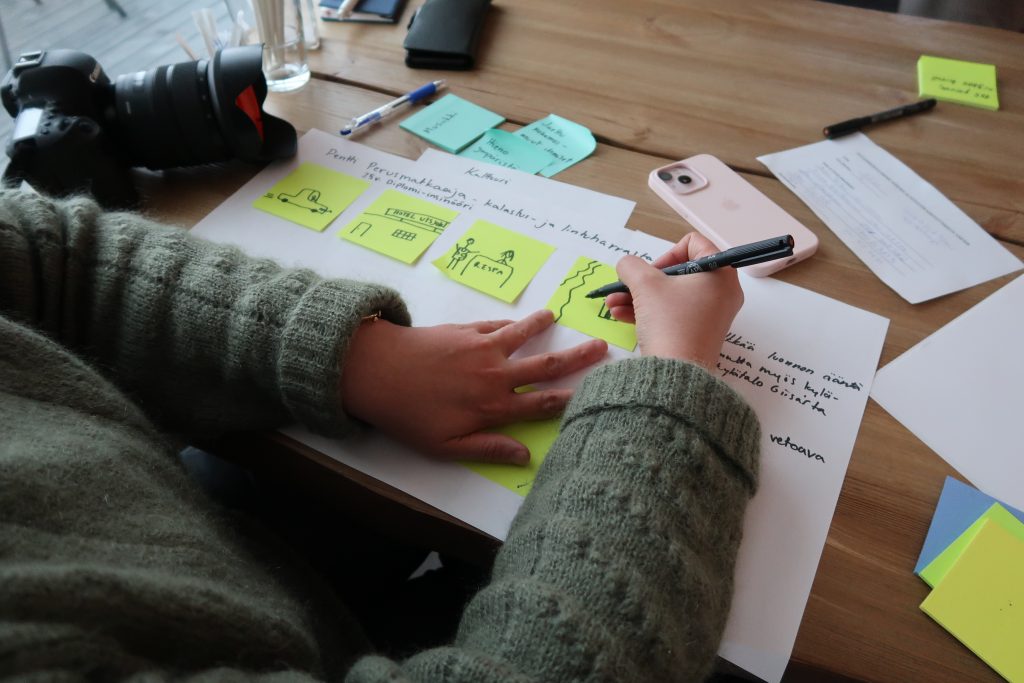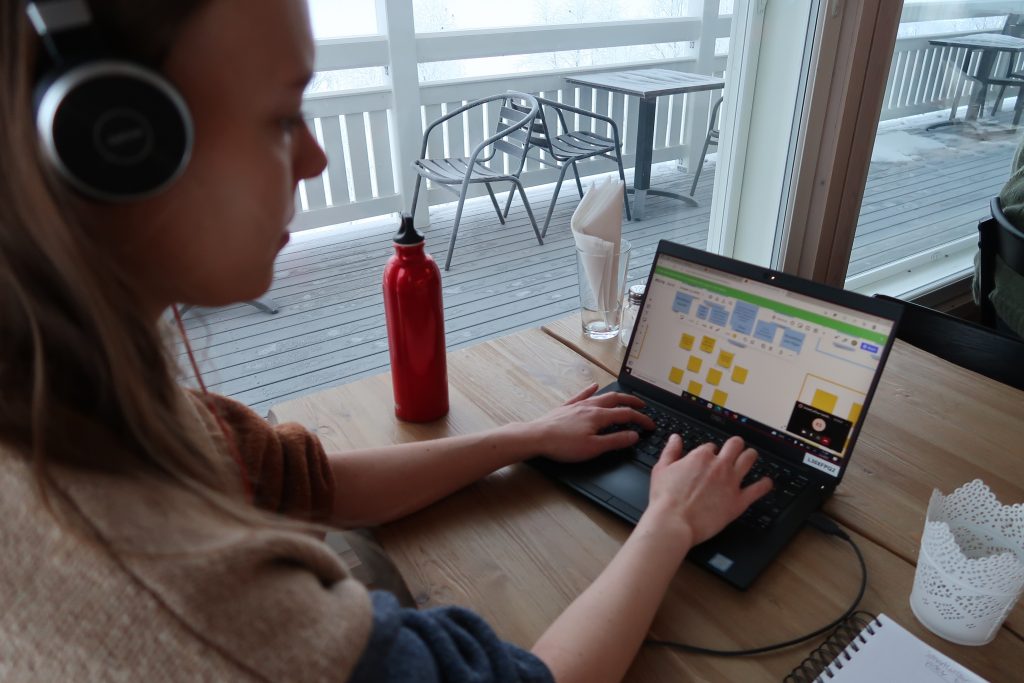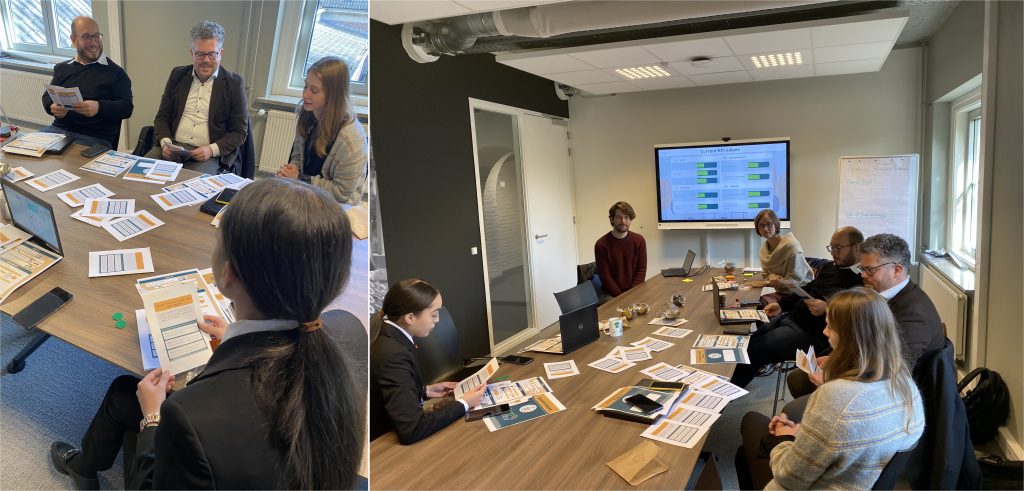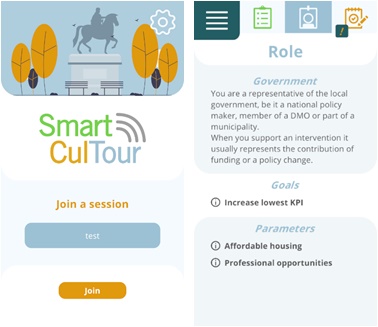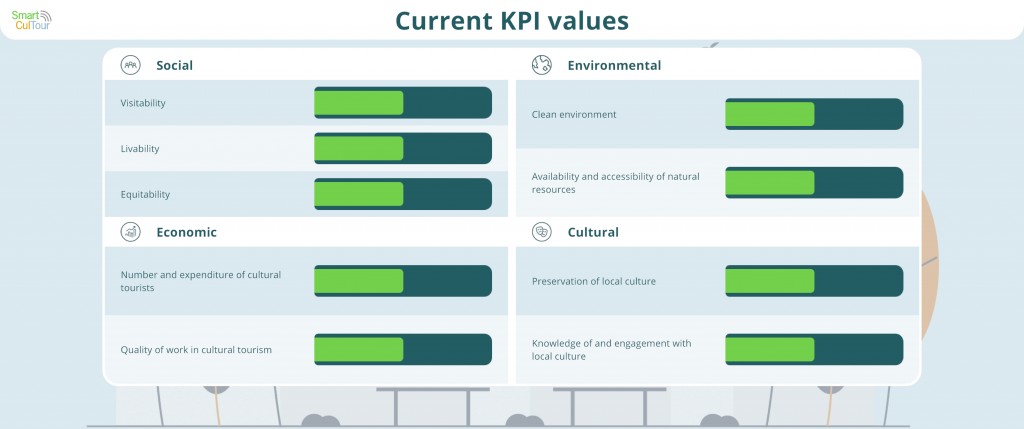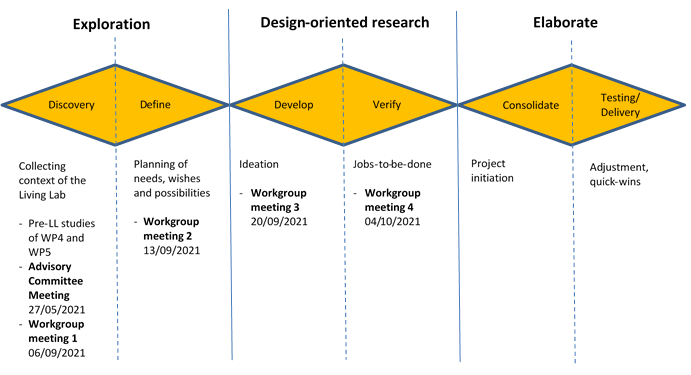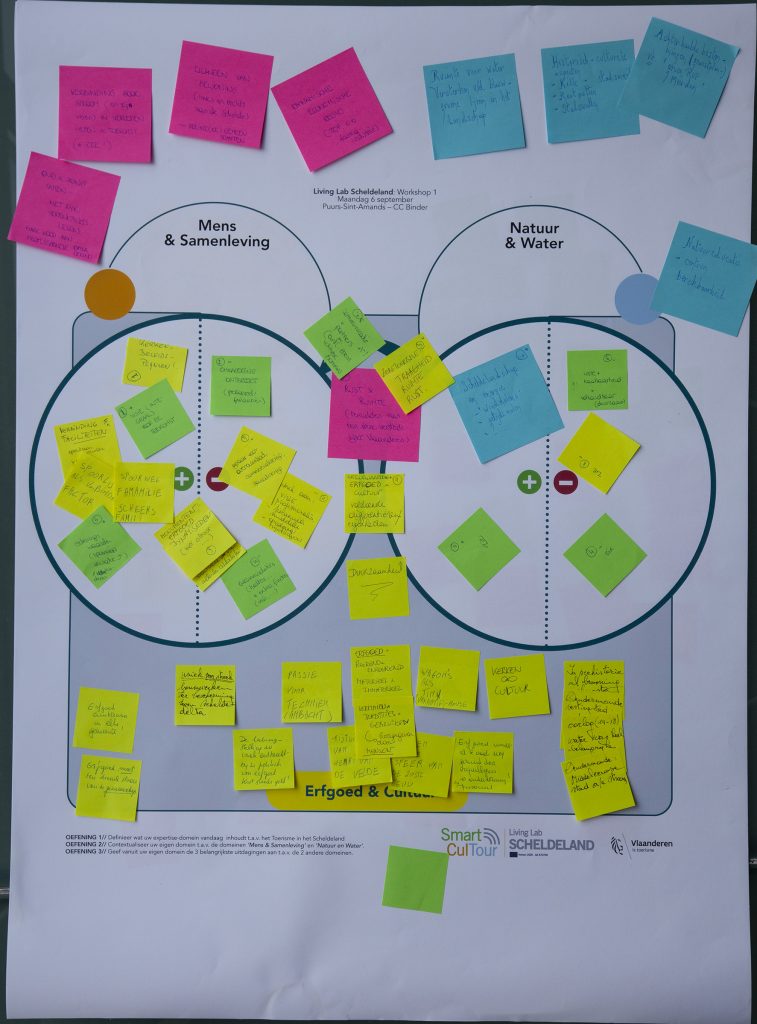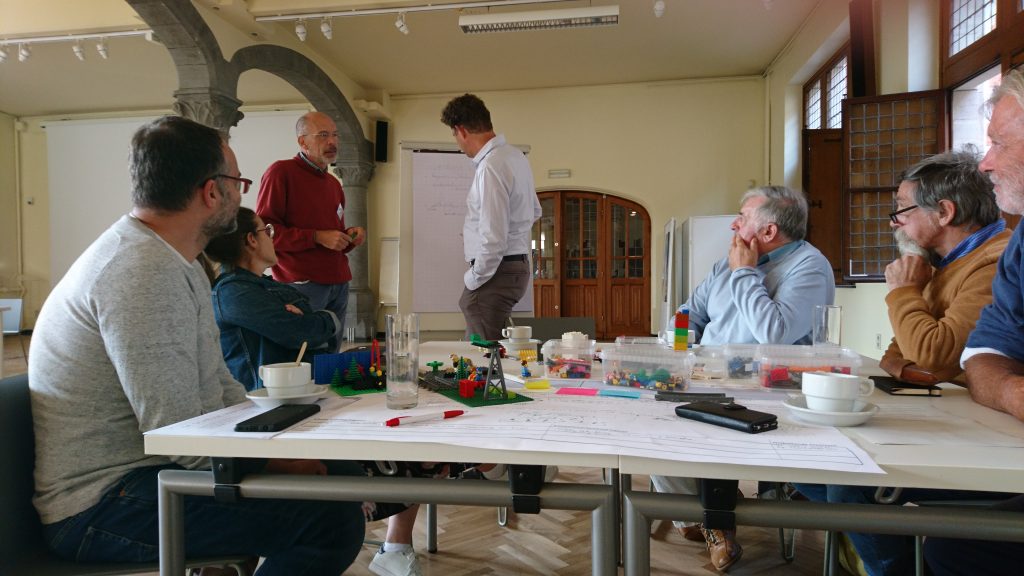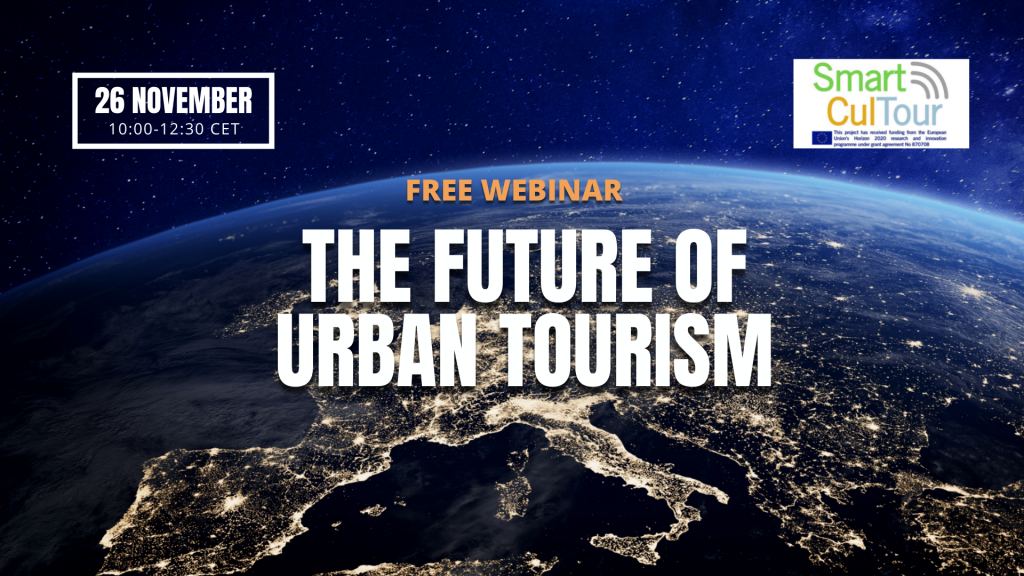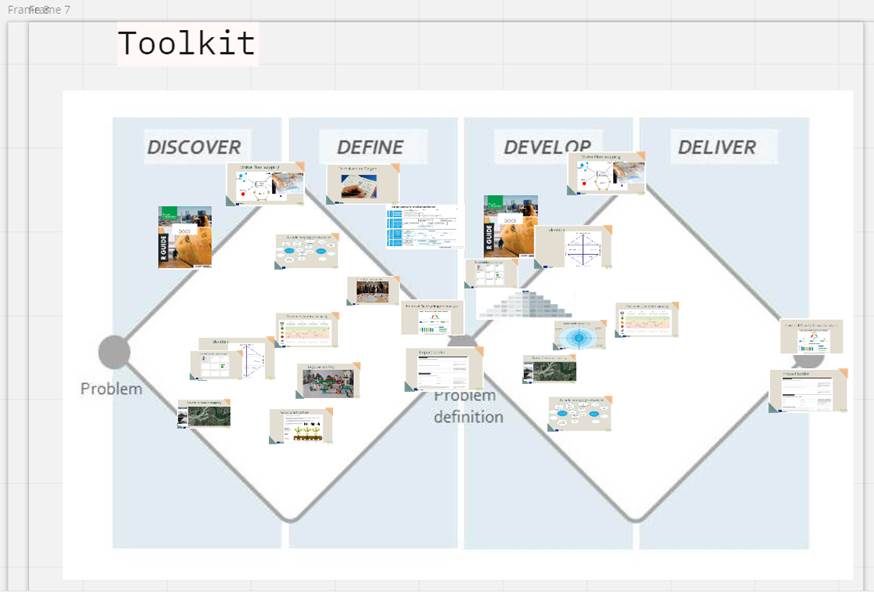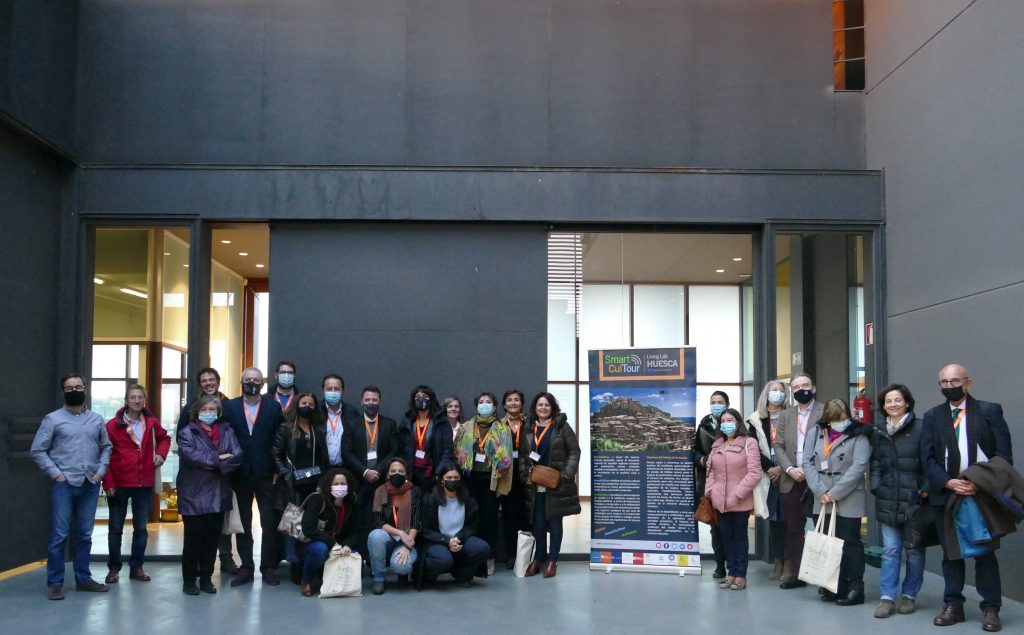The fifth hybrid workshop held in the Utsjoki Living Lab
The Utsjoki Living Lab held its 5th workshop with the local stakeholders from tourism and municipality in the beautiful and wintery Utsjoki area on the 2nd and 3rd of February 2021. The facilitators of the Living Lab workshops were from the University of Lapland.
Based on the constructive knowledge from the previous meeting, it was time to focus on ideation and more creative thinking of the intervention videos. The themes of the videos, selected last workshop, were how to behave in nature, and how to represent modern and traditional Sami culture. While jumping into the ideation, it’s often difficult to be creative in the moment. Hence, an ‘art impulse evening event’ was organised a day before the actual workshop, on the 2nd of February. During the one-hour event, art videos were presented by using e.g. place-making method by professor Satu Miettinen.
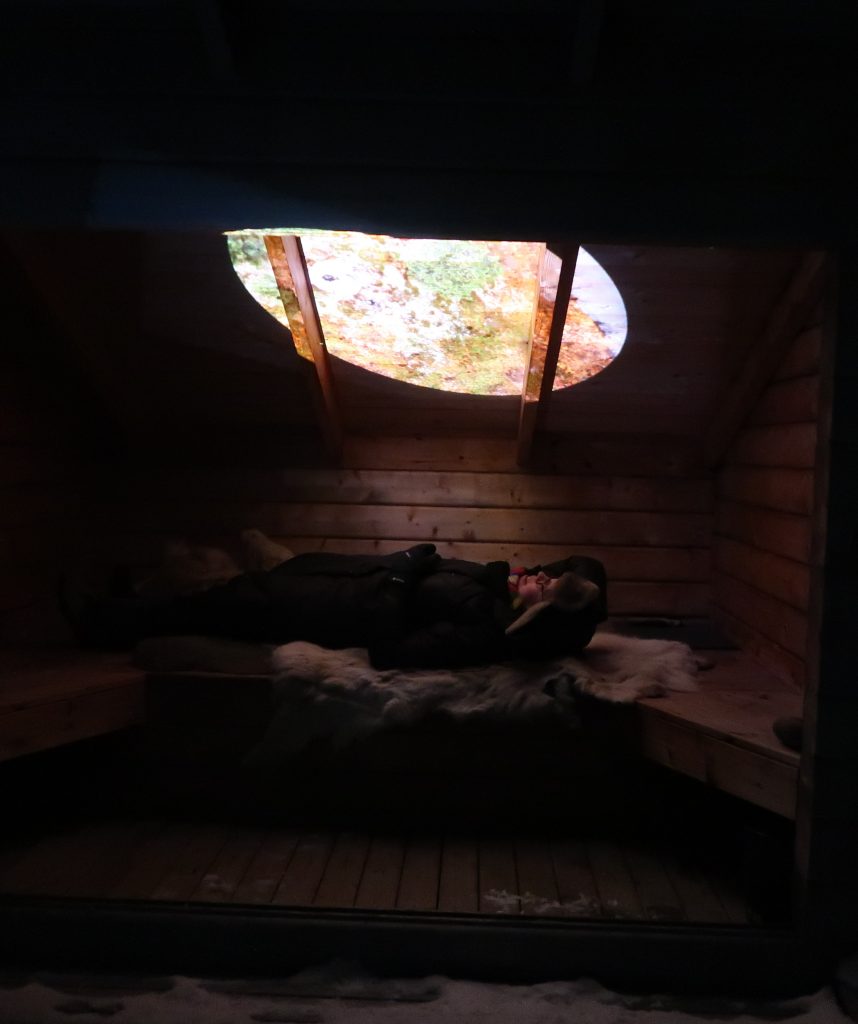
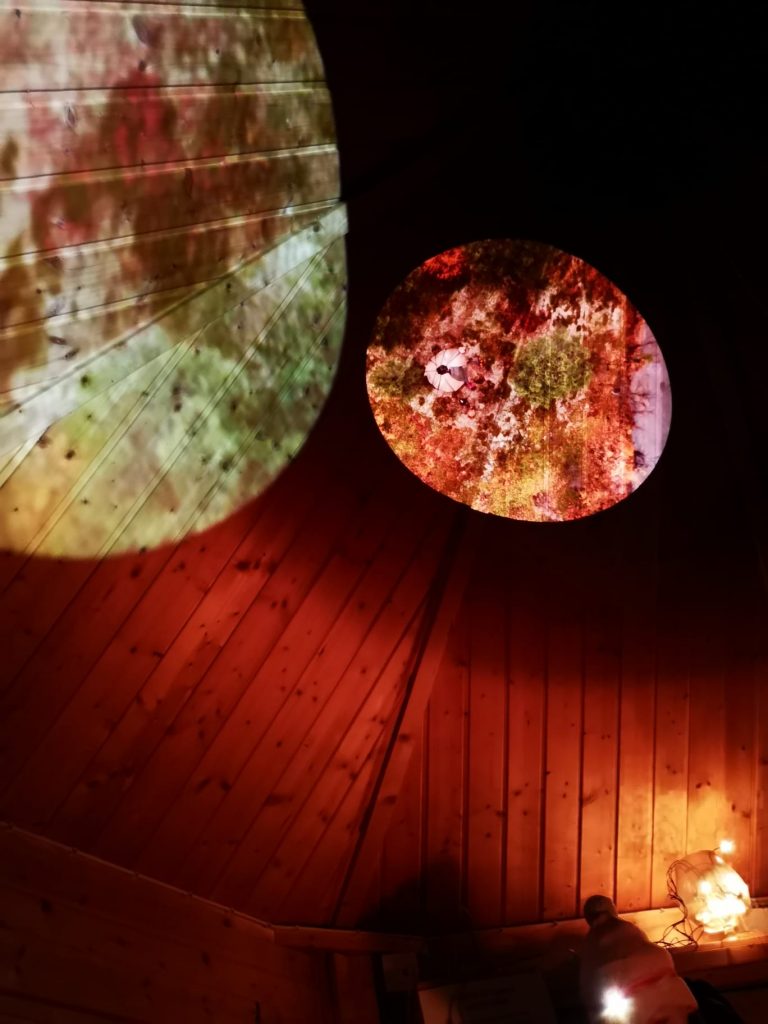
Participants experiencing the art impulses in art event (Pics: Mira Alhonsuo)
The art impulses were first introduced to the four participants by the fire in the hut and right after the art experiments were shown and performed outside. The participants were freely invited to take part in and so few of them jumped into the experimentations. The dark evening made it possible to project the place-making videos on different surfaces, such as snow and the roof of the hut.
The official workshop started the next day. The participants, local stakeholders from the tourism and municipality, were invited by offering both onsite (6 participants) and online (2 participants) participation. After a short introduction and a quick replay of the art impulses shown the previous evening, the ideation exercises started. The participants were first asked to recall their art experiences: what art has impressed them and why? From these experiences, important features were selected, discussed, and mapped down. After that, the participants highlighted the most important features. These selected features were used by the groups to support the ideation, while developing the draft version of the two intervention videos. The video ideas were deepened to consider, among other things, where the video was filmed, what story it tells, and where the video could be presented to impress travellers with its storytelling or location.
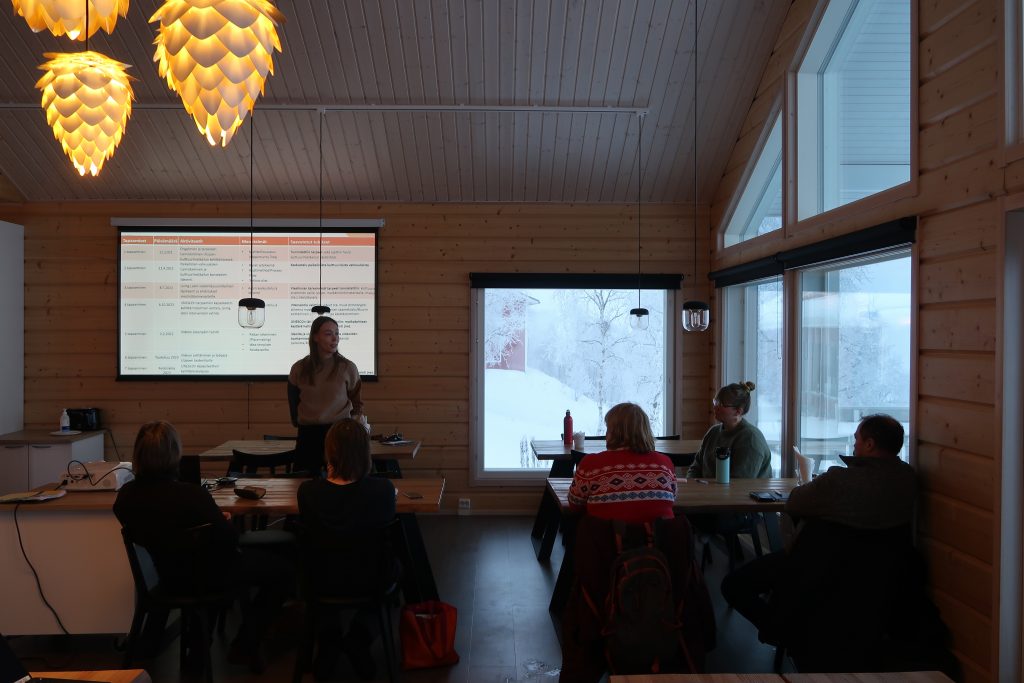
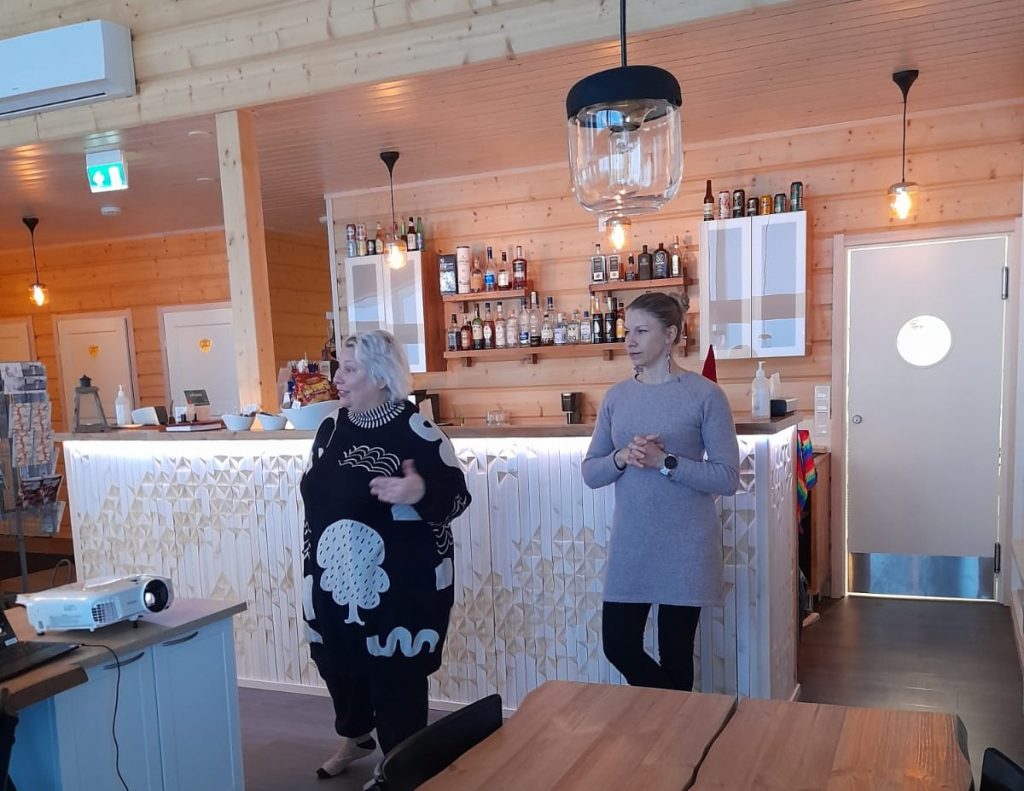
Project staff and workshop facilitators Ella Björn (left picture) and Satu Miettinen and Mira Alhonsuo (right picture) starting the workshop next day (Pic: Mira Alhonsuo)
In the last exercise, the groups visualized service journeys, where they used the persona development tool produced in an earlier workshop (April 2021). The groups either selected a single video or considered merging the two video drafts. Through the service journey, the idea was the video, its location and impact were concretized better.


